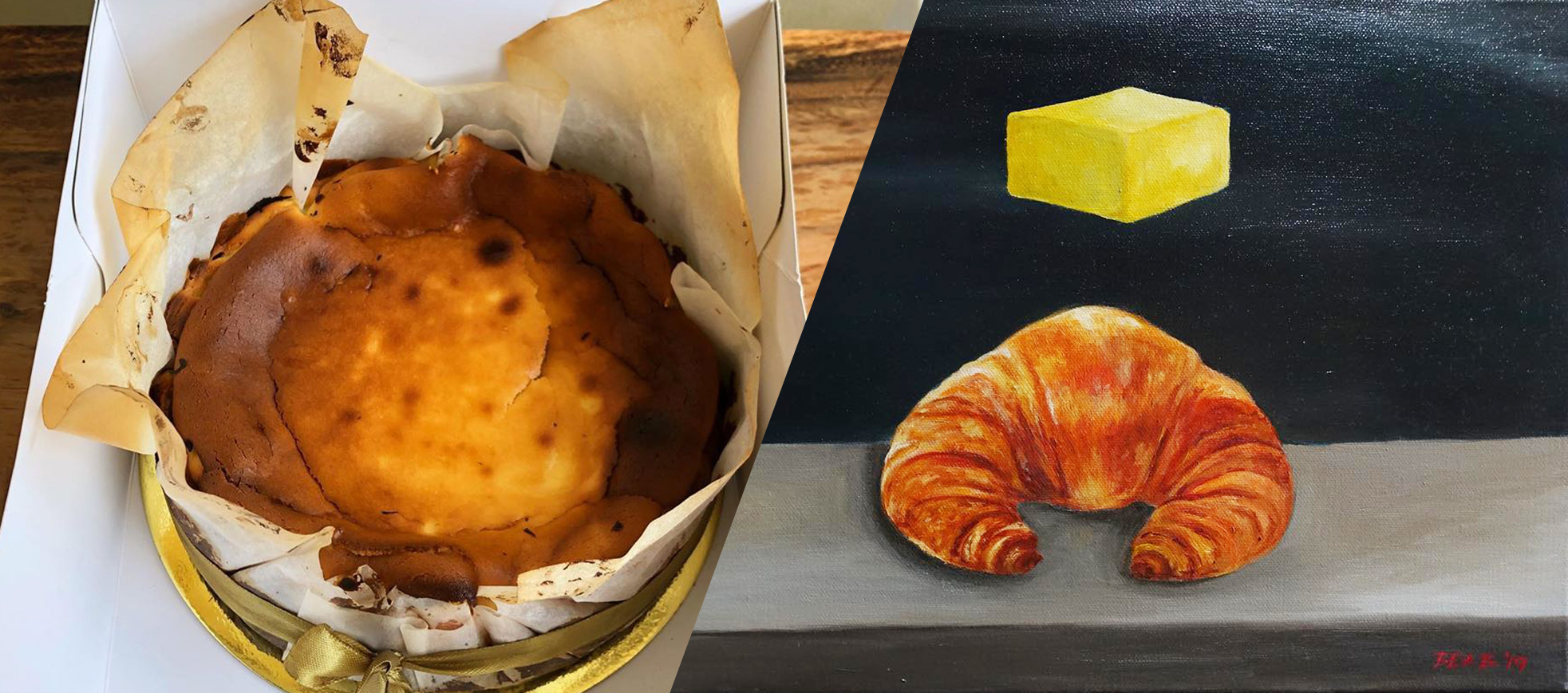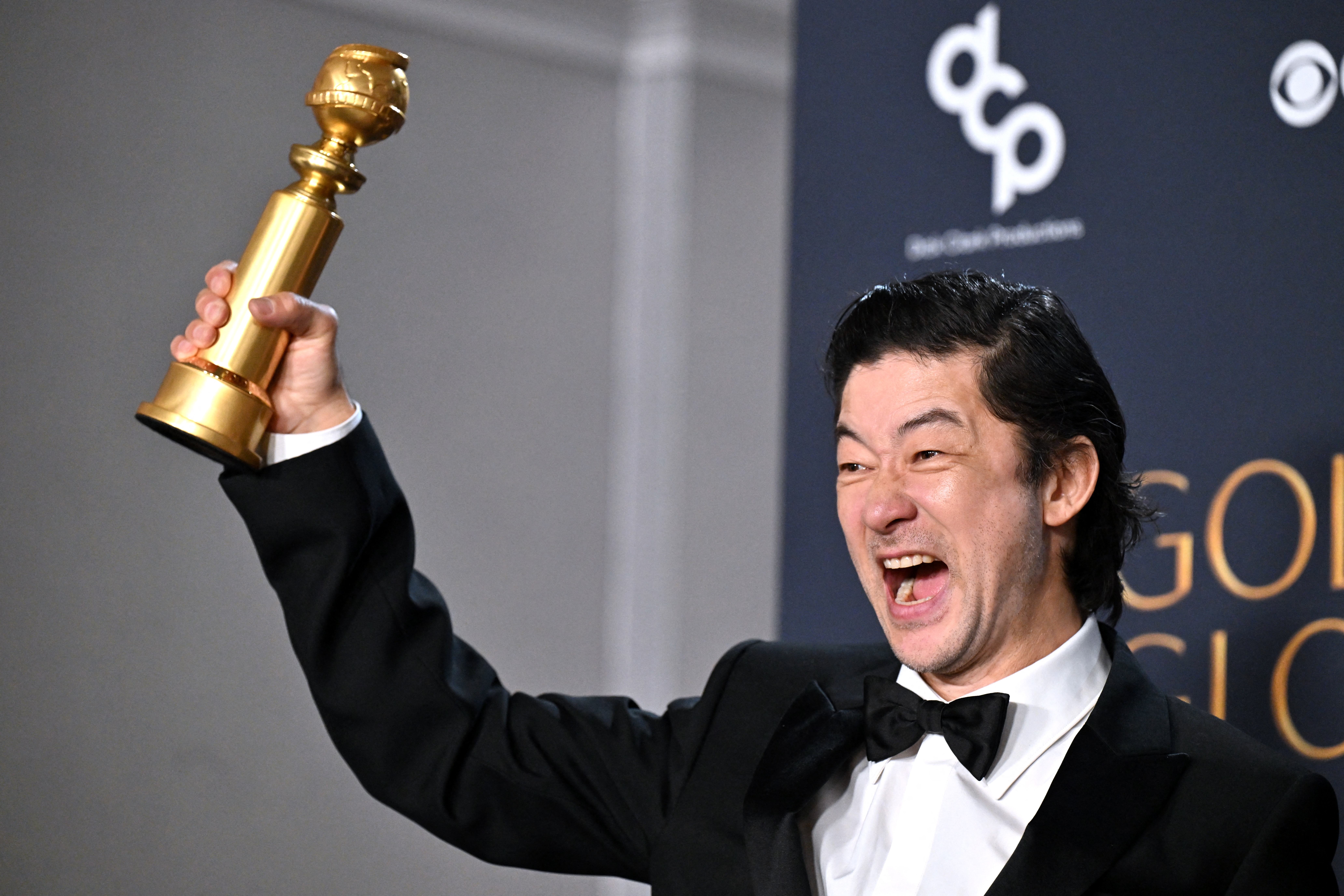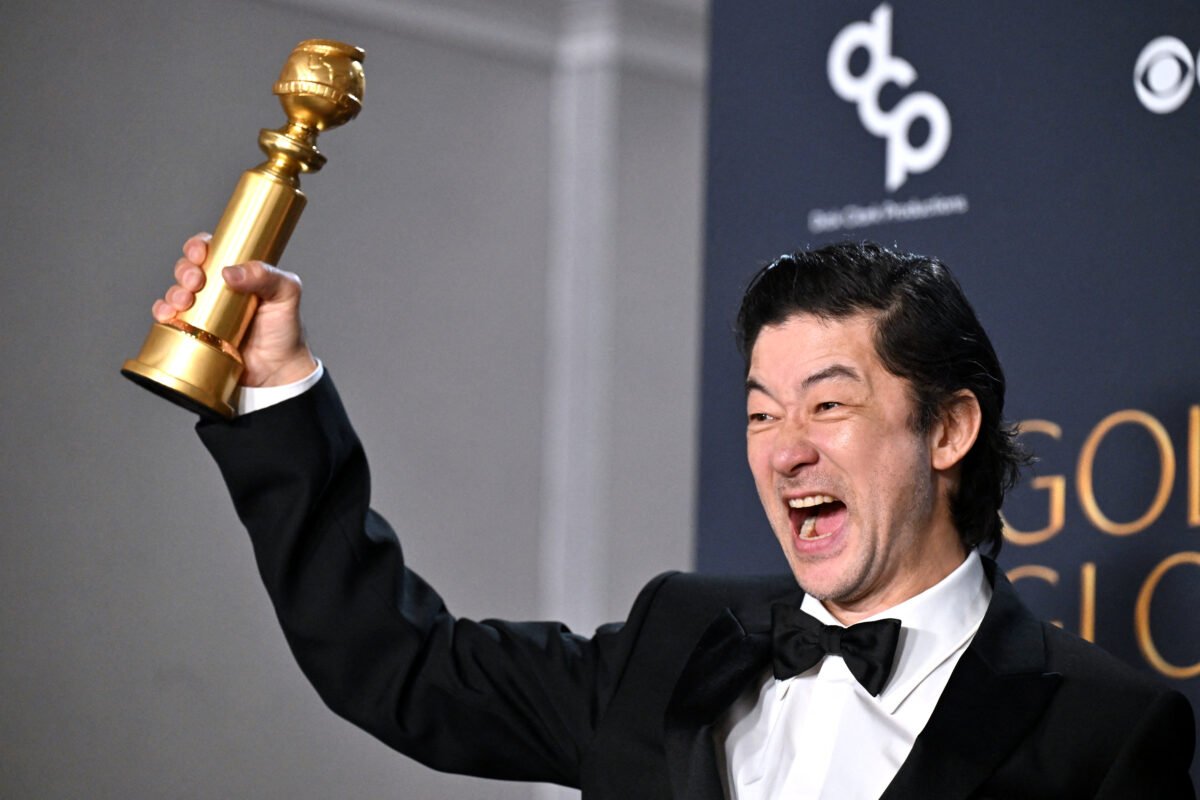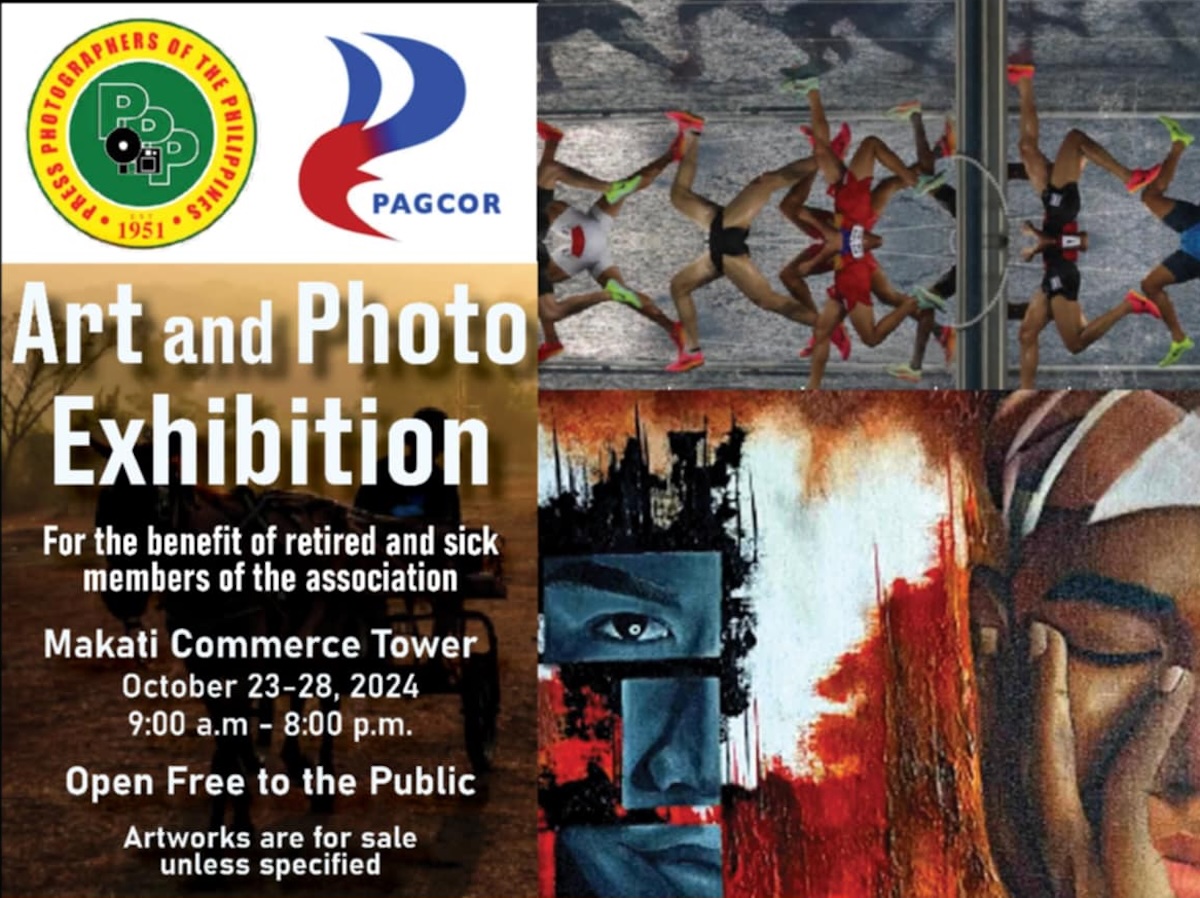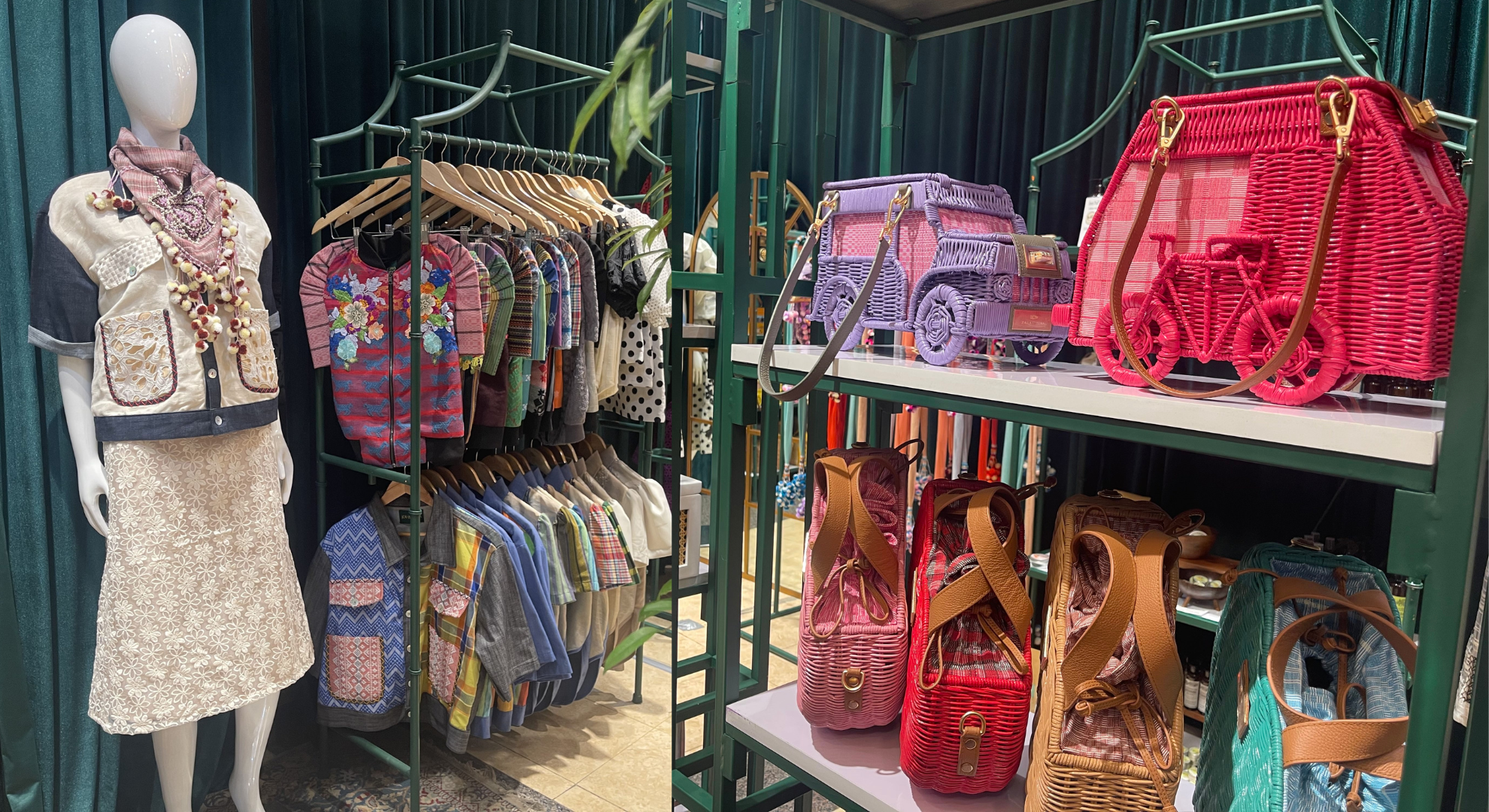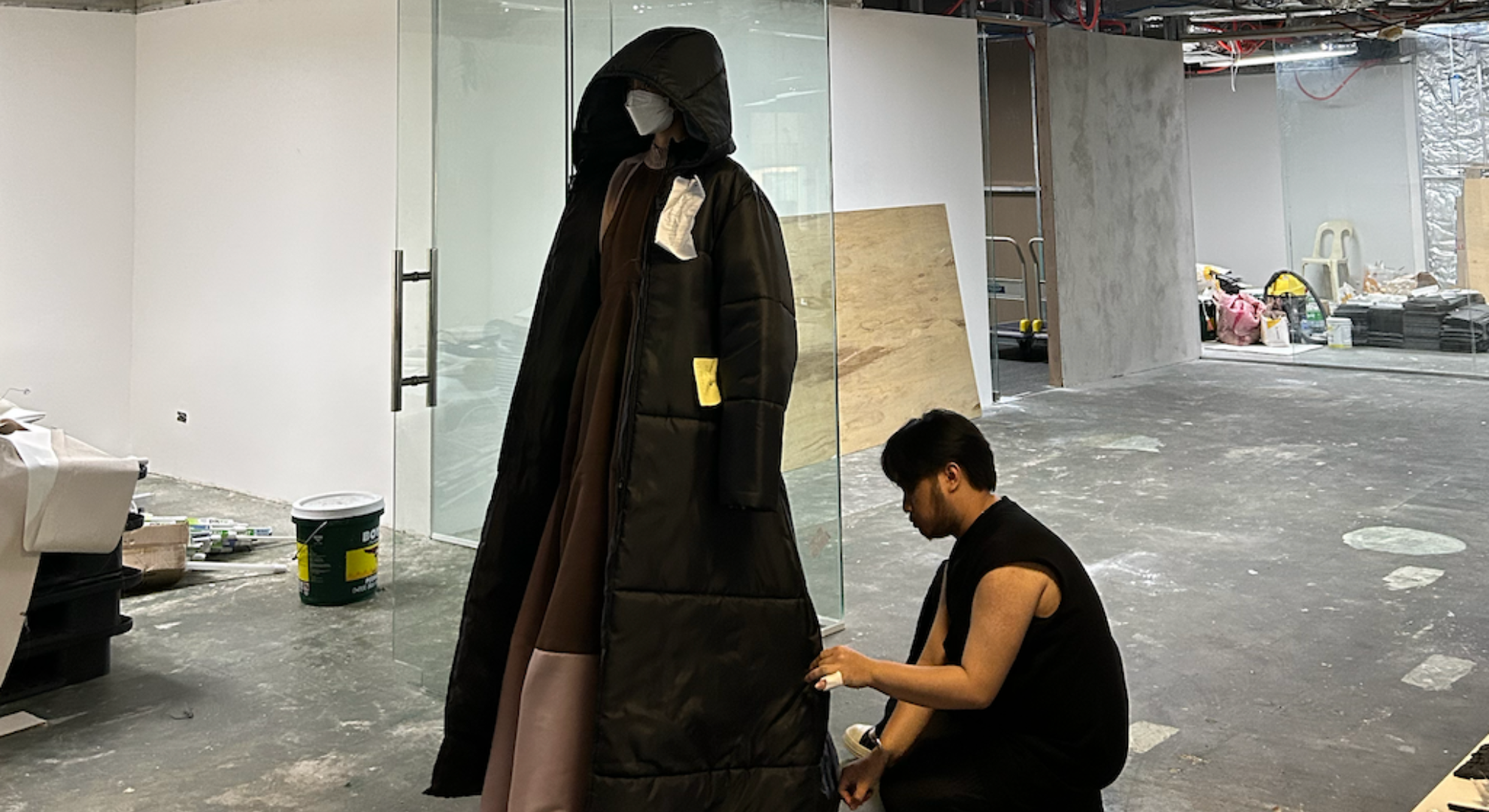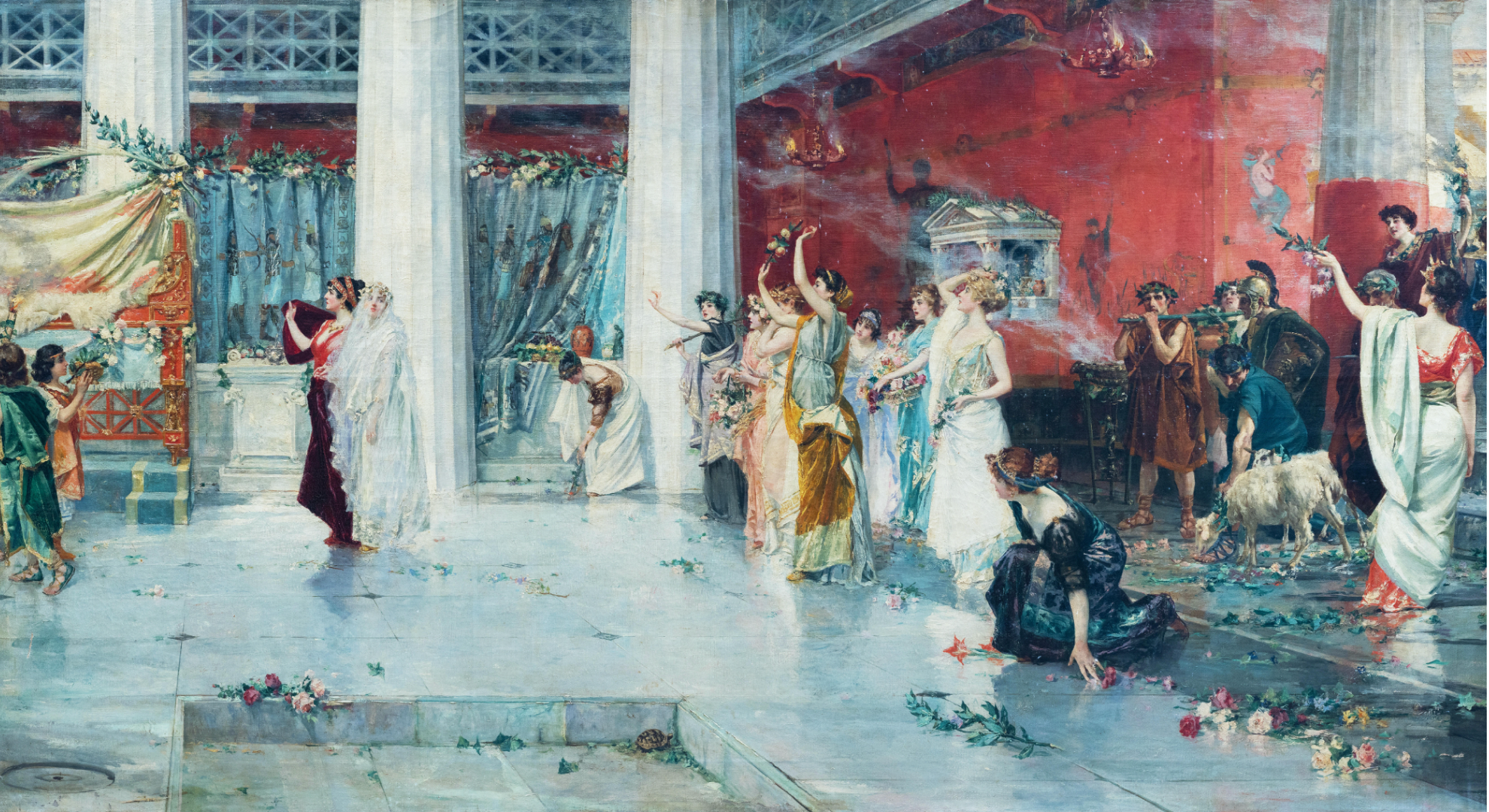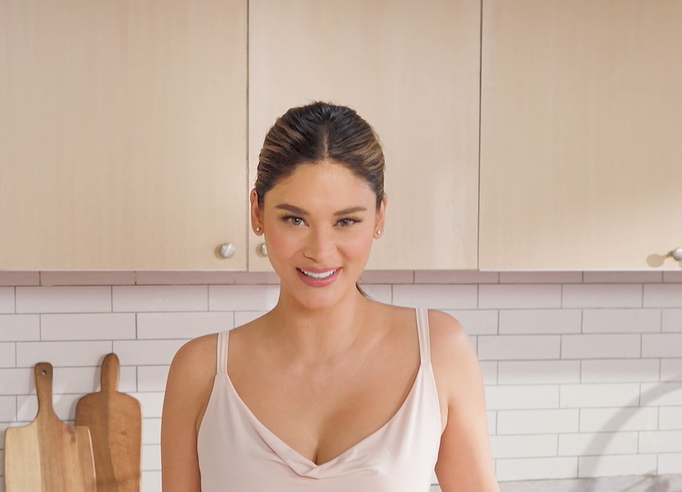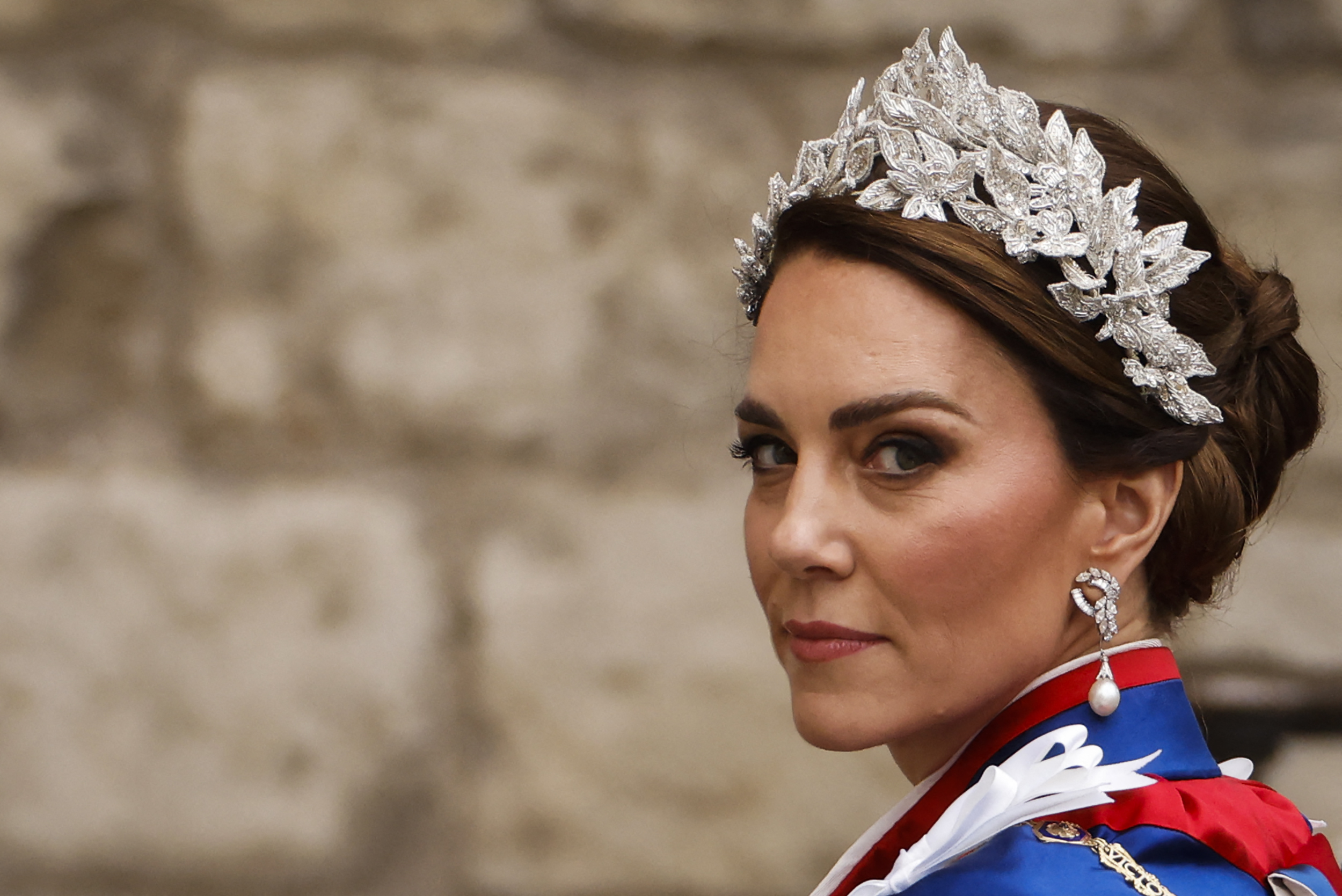Bea and I were both showing work at the second biannual exhibition being set up by 98B Collaboratory in Escolta in 2018. Bea was wrapping canvas around a massive column in the First United Building’s The Hub, which has been turned into an exhibition space. It was a work called “All That is But a Metaphor”, described by Bea as a “witness to how life along with its urgencies, complications, victories, environment, society, and its everyday affect the entirety of a work.” It was a work that was both performance—a transparent gesture on the open-endedness of the artistic process—as well as somewhat of a sculptural proposition, prospecting to intervene in architecture to assume three-dimensional form. (And a fourth dimension, too: time.) I was just introduced to both Bea and her work, which was to me at that point, literally and figuratively, a blank canvas!
I wasn’t expecting what I saw when I discovered more of Bea’s work. They were paintings of food. They weren’t straightforward still lives, but surrealist renderings of the mouth-watering—butter hovers a visibly flaky, golden brown croissant; a bilao of pancit Malabon teeters on a velvet-draped ledge, like the bowl of fruit on the table in Caravaggio’s The Supper at Emmaus. Little did I know that in Bea’s case, art imitates life imitates art. The artist is also a most prodigious baker. Her Basque burnt cheesecake is a work of art. It took self restraint I never knew I had not to eat it immediately when it finally arrived (“Chill it first—it blooms in the fridge,” Bea said). Her ube pandesal, filled with ube halaya, cheddar, and mozzarella, are a whole other story that deserves its own fan club. They’re the softest sweet-savory buns I’ve had in my life.
Below I talk to Bea about bread, motherhood, and the creative process.
I realize I never got to ask you about your painting practice. I’ve always been curious about your paintings of food. How did you come to that subject matter? Do you remember the first food painting you did?
“The first food painting was probably a still life of fruits in college, but come to think of it, most of my works have food elements in them. Perhaps a drink, or an apple, or anything edible. But I guess the first painting I dedicated mainly to food is a painting of a croissant after my failed attempt to bake one. I painted it out of frustration because, you know, croissant is not really an easy pastry to do. It’s dough, butter, dough, butter. I haven’t succeeded in making a croissant until now because you have to make it in a temperature-controlled room, and this tropical heat is an enemy. From then on croissants became a recurring image, and my fascination with bread grew to other kinds of bread, like my ongoing “100 kababayan” a micro-archive of different kababayan bread I’ve tried made by different bakeries. It’s hard to finish because I literally need 100 different panaderya to get kababayan from, which I eat and document.
“The fascination isn’t limited to bread but other food as well, like when I made a painting of pancit Malabon, because I consider myself a pancit snob. I grew up in Malabon with elders who can cook pancit really well. The recipe hasn’t passed on to me yet. My most recent painting of bread, which I finished right before ECQ, is a work after my friend’s gorgeous rustic bread. She bakes really well. I guess I’m just fond of different food that’s interesting enough for me to romanticize, its importance to me, and make it a muse for my next work. It should have a relevance to me or what I do, of course.”
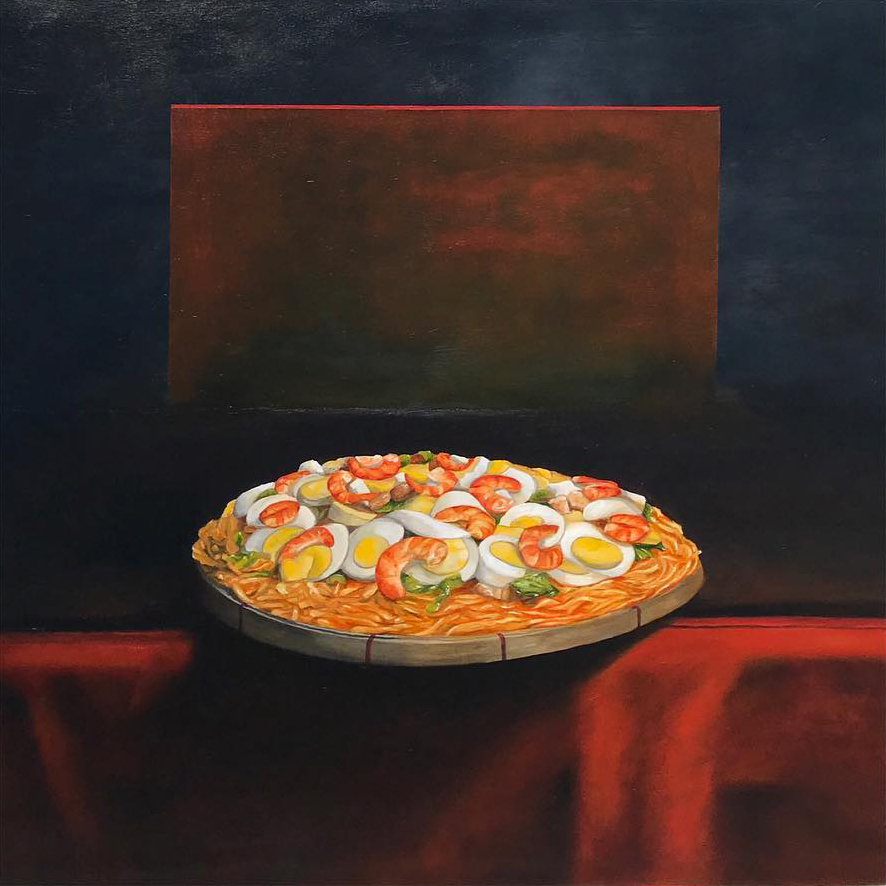
I might have seen you post a long time ago something you’ve baked, but it was only recently, during lockdown, that it seems your baking went on overdrive! Is that a fair observation? Can you take us through when and how the serious baking began? And has it always been a plan to expand it into a business?
“I baked once in a while before, but it’s limited to batter-based cakes, bread, and cookies. Bread using yeast is really a new thing to me. It all started a day in ECQ when we didn’t want to go out but we were craving for pandesal. That was when I started watching videos and asking friends for how to’s, until I got the hang of using yeast, that lead to different kinds of bread, except sourdough.
“It got serious when friends and family started ordering from me even if I was not really selling them and just posting it on social media. And since I basically have the free time of 4 to 8 a.m. (that used to be allotted for prepping and commuting to work), before I start my daily tasks for working from home, turning it to a side hustle became possible. On weekends we sell bread to our neighbors in our community, but the menu changes every weekend depending on what I feel like baking at that time. Now friends and colleagues order our burnt cheesecake and pandesal with a week lead time because I have to plan my baking sched, only on days I can bake.”
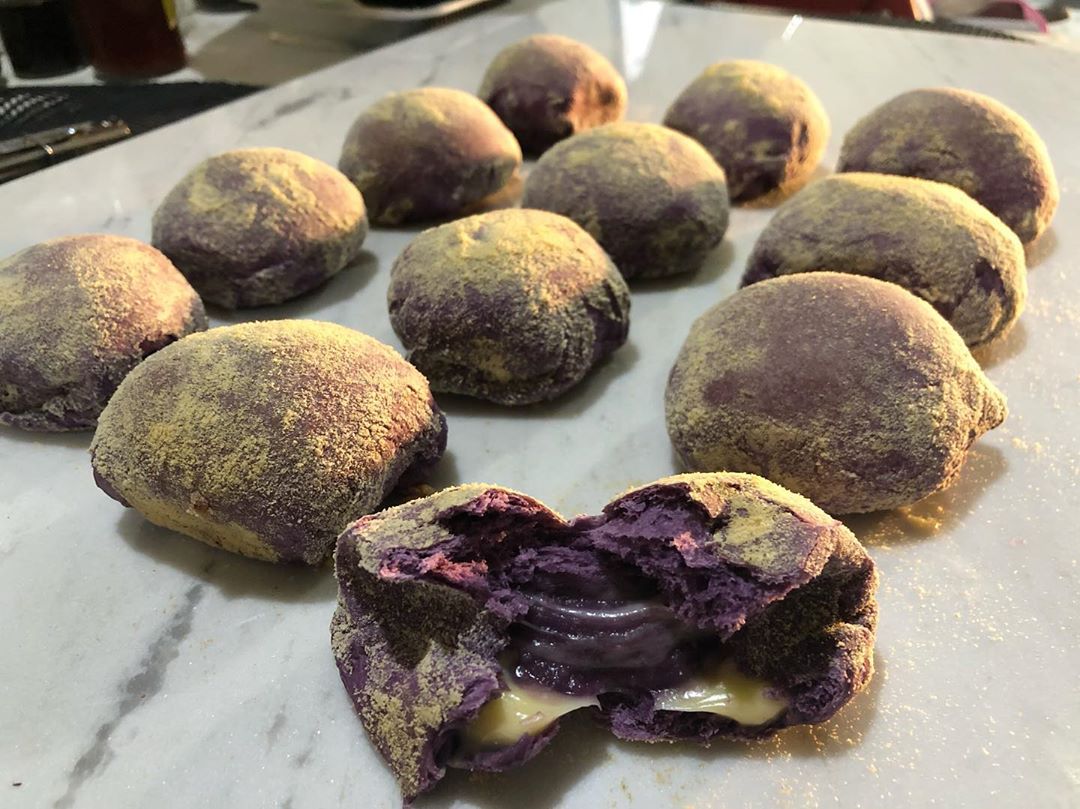
Tell us about some of the things you’ve made. What’s your favorite and what’s the trickiest to make?
“Breads you see in panaderya: pandesal, Spanish bread, pan de coco, cheese roll, egg pie, dinner rolls, etc. I love Filipino bread but I also love making whole wheat loaves using a poolish (things I learned on the internet, it’s a fermented dough), just easy kinds of bread you can do in one morning. I haven’t tried making sourdough bread because I cant keep a starter alive. So I’m a bit limited to bread with instant yeast. And pies! I love making egg pie because it’s also my favorite. Trickiest would be danish and croissants. Saving it for another time and colder months. I would say my favorite bread is my version of Spanish bread, and burnt cheesecake.”
I learned that art doesn’t always really end in paintings and visual output. Maybe at some point, how you live your life is part of your art, part of your process.
Who or where do you get baking inspiration? Any baking secrets you can share?
“Oh, Youtube University. I consider myself a student of the internet, especially this ECQ. But I also consult with a friend who’s a chef, Anna Santella, whenever I have a technical question like, Why is this batch more yeasty than the first one? What happened—is it under-proofed or over-proofed? Things like that. If I mess up a batch we dissect what went wrong, we check the texture, the doneness, via online. It’s a fun way of learning.”
“When in doubt, Youtube, Google. Ask a friend, especially if you didn’t go through formal training like me. But a secret I guess would be to measure your ingredients and be as accurate as possible, by the gram or by cups, however way you want to do it. And windowpane test! Check if the gluten is formed and elastic. It’s my favorite step in my process, checking the elasticity of dough against a light source. The dough should be stretchy enough for light to pass through the dough, it’s a visual cue that your dough is already well kneaded.”
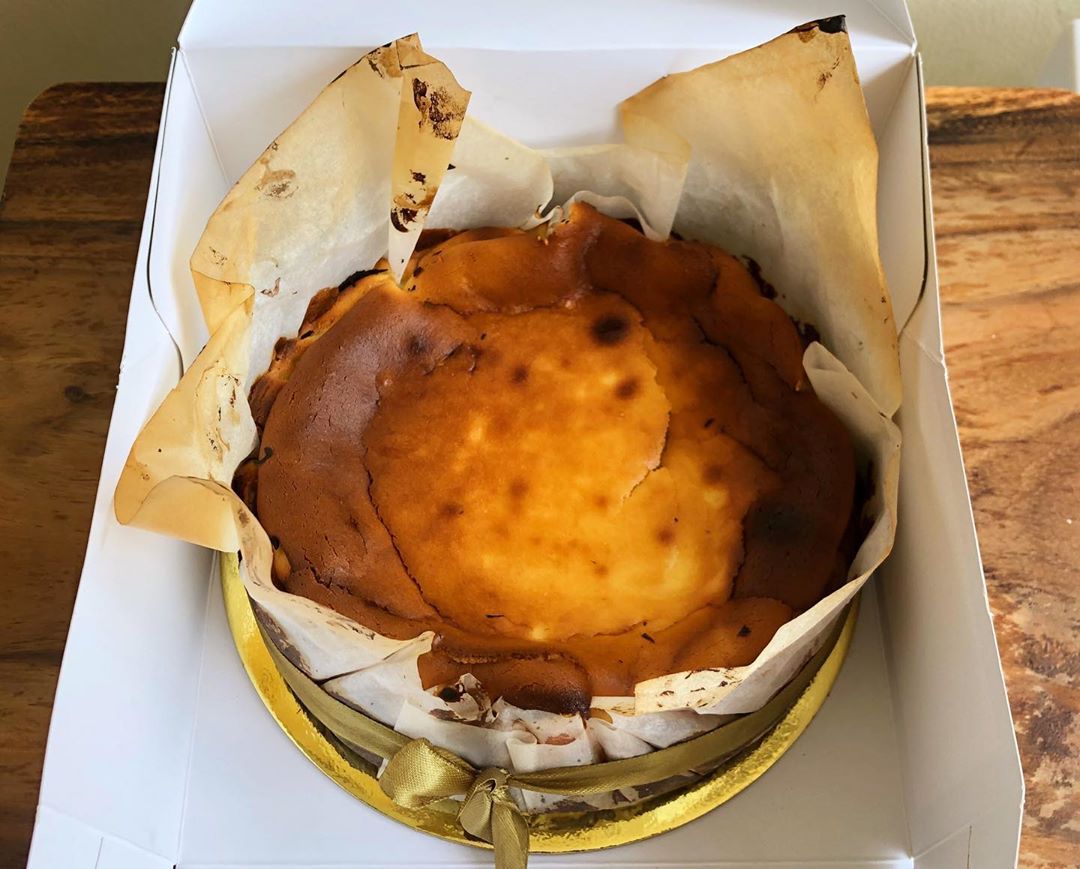
Tell us about baby Marcel! I know that she doesn’t like sunlight much. How do you balance everything else with the responsibilities of being a new mom?
“Marcel my nine-month-old baby girl is named after Marcel Duchamp! She’s starting to show her character. Since we’ve been inside the house due to ECQ, she’s a skeptic to unfamiliar faces and doesn’t really like the heat of the sun.
“I sometimes find it hard to balance work, family, art, life, and side hustles; you’d end up sacrificing one or two of them, and that’s probably the difficult part. You have to set aside or be mediocre in some parts of life. However, the lesson I learned is probably that art doesn’t always really end in paintings and visual output. Maybe at some point, how you live your life is part of your art, part of your process. I tell myself that there’s this fine line that separates and connects life and art, and as Marcel Duchamp would put it, the word art (artem) means “to do.” So I guess how we do things is really part of our creative process, how we creatively maneuver our lives everyday is part of your art.”
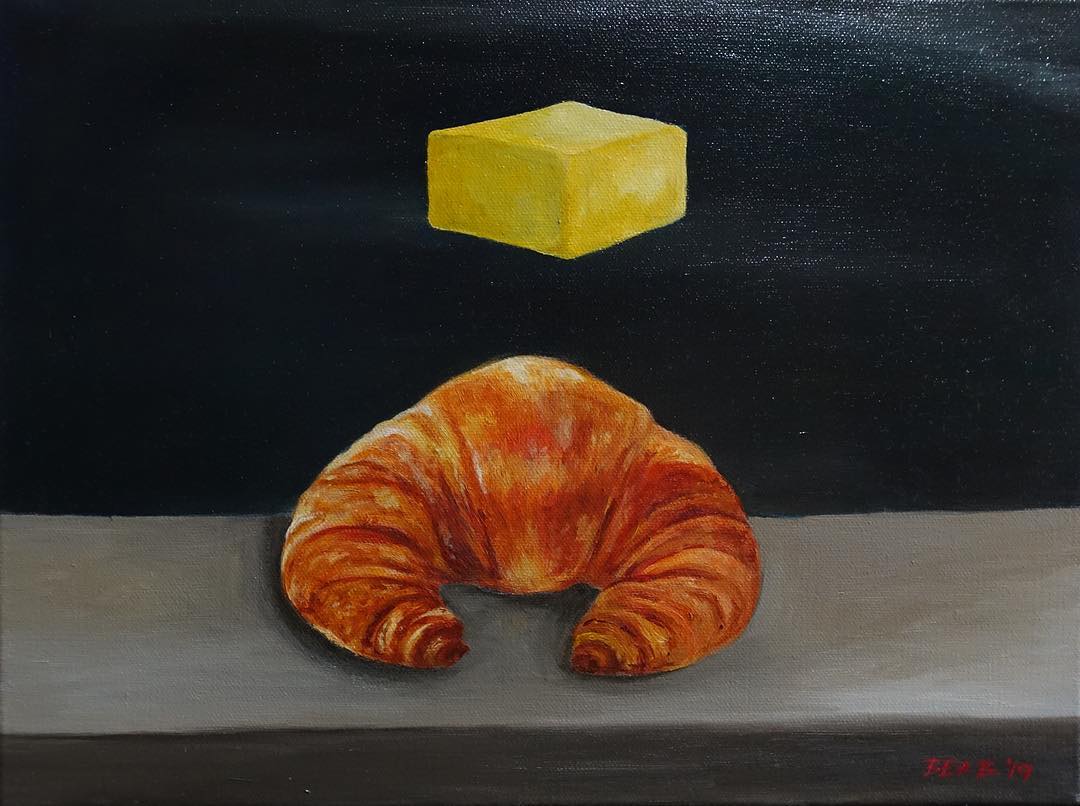
I’m curious to know your thoughts about baking as a creative process. Do you see parallels between painting (art-making in general) and baking? Or do they exist in completely different universes for you?
“It’s surprisingly so much the same as when I’m painting. It’s just that with baking you end up with a different end product—an edible one. If your’e lucky, just like in painting, it gets sold. The slow process of baking, especially bread making, is the same as when I do works, slow and tedious
“The slowness of making and kneading dough kind of parallels my creative process in doing work. You start with, What do I want to eat today? and that’s the idea, so you gather your ingredients measure it exactly by the grams, knead it, let it rise, and mould it before you finally let it rise the second time before baking it. And you need to follow all these steps religiously to complete the process and end up with good, delicious bread. And isn’t that the same process we follow to make a self-satisfying work on canvas or paper? Whatever your steps are after the idea, you do follow your process to end up with a finished work. Skip one step and the whole process is ruined, it will feel incomplete. The process needs to take place because, for me, the artwork isn’t the visual output alone.”
Check out Islas Coffee on Facebook and Instagram to see what Bea has on offer. “It’s still a work in progress since we really don’t have a fixed menu of bread yet, because it always depends on the mood,” she says. It remains a side hustle, so give them a week of lead time when you plan to order.
_____
MORE FROM THIS AUTHOR:
Artists Talk: Wawi Navarroza in conversation with Jed Gregorio
Artists Talk: The short and sweet poetry of Lui Alcazaren’s collage art

